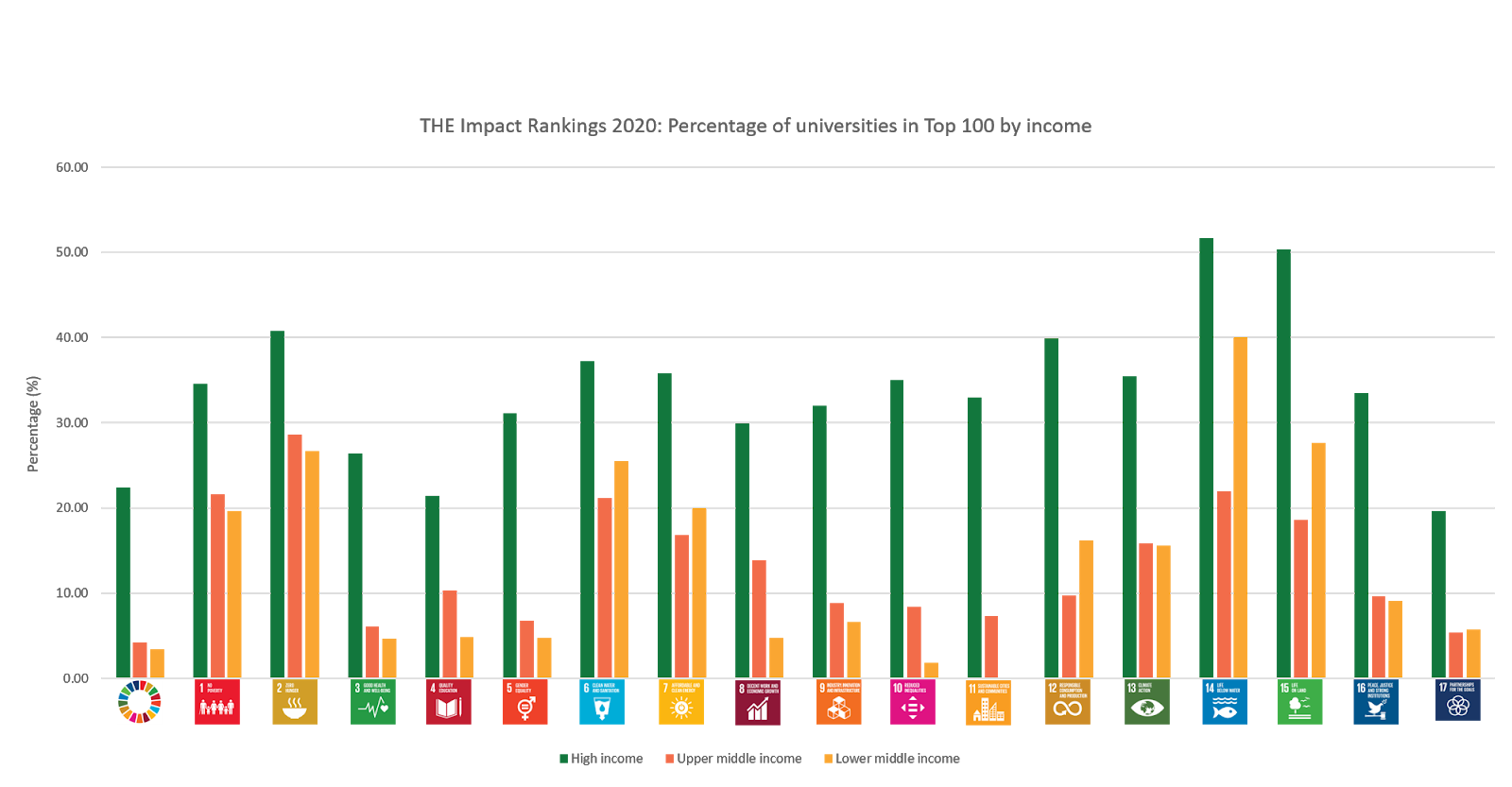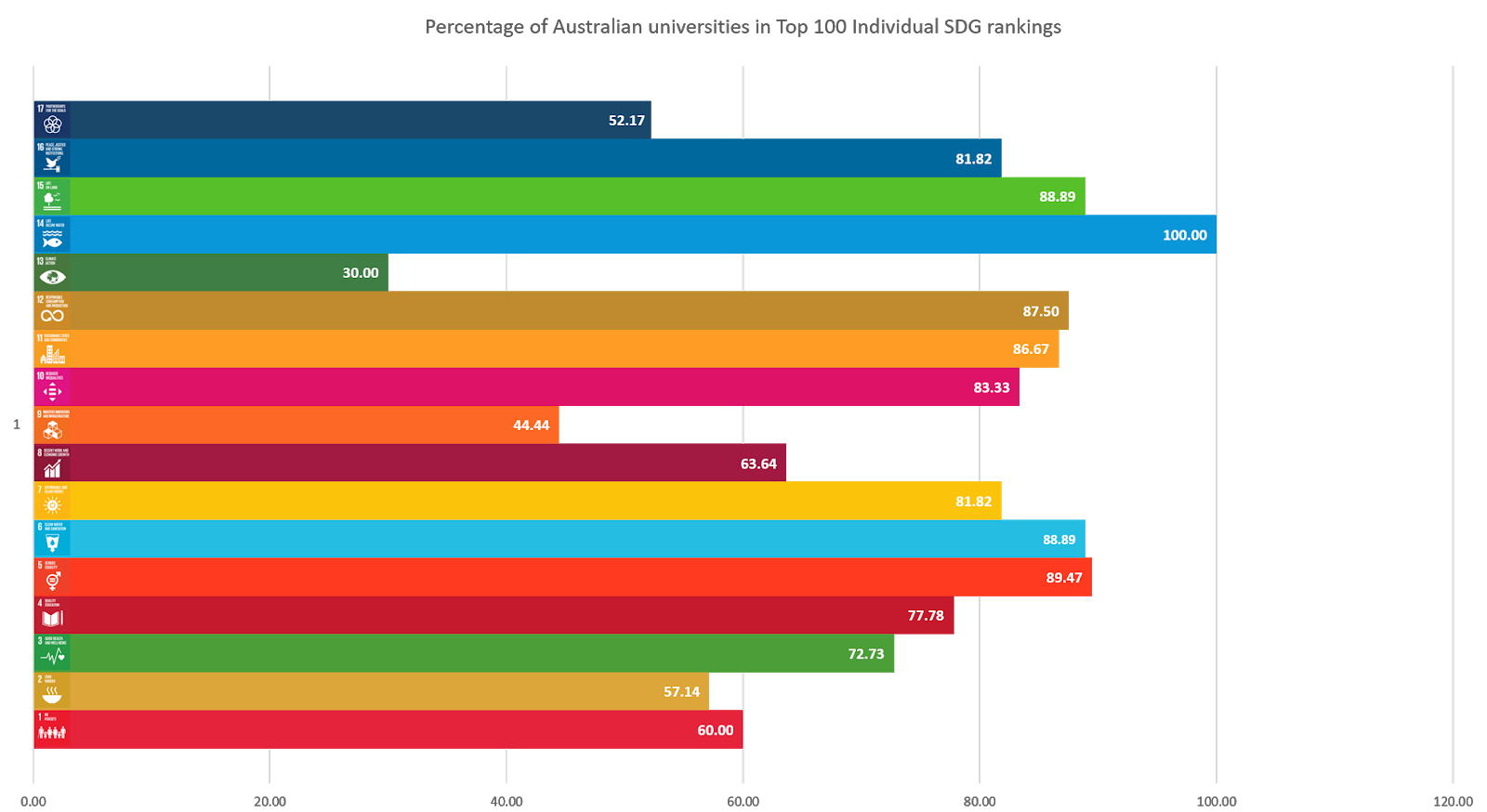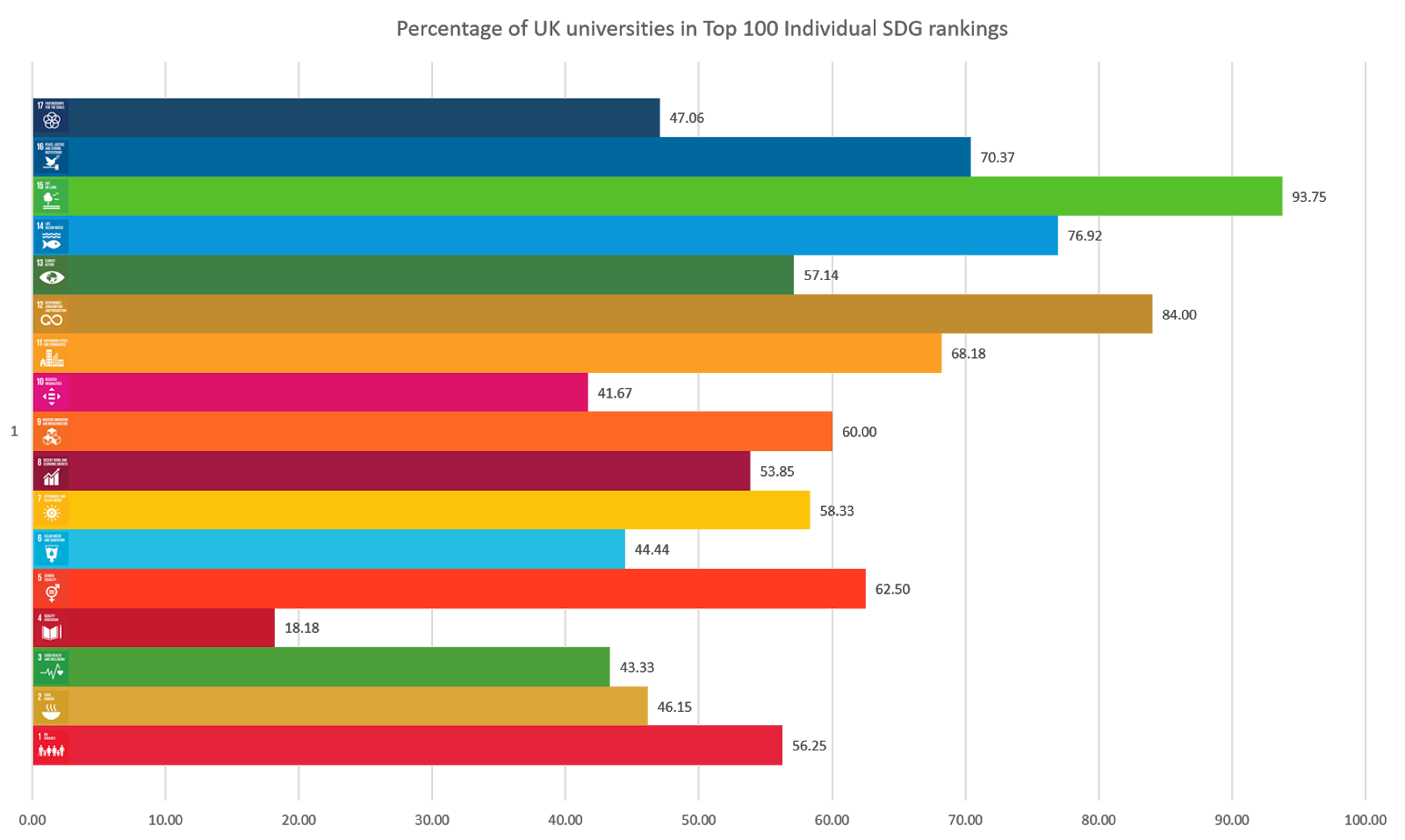The results of THE Impact Rankings 2020 were released last month. The impact rankings are the first global attempt to measure university progress specifically based upon the United Nations’ Sustainable Development Goals (UN-SDGs). It can be a catalyst for action, a mechanism for holding the university sector to account, and an opportunity for them to highlight great work that they are already undertaking.
Here are some interesting insights from the rankings:
1. Lower-middle income countries performed better in areas of Environment and Services.
The percentage of universities in lower-middle income countries ranking within the top 100 for individual SDGs in the areas of environment and services, is significantly higher than for other areas including: equality, economy and structure.

The graph above categorises universities across the world by national income levels and displays the percentage of which ranked within the top 100 for each individual SDG.
Overall, universities from higher income countries performed better than universities from upper-middle income, and lower-middle income countries. Universities from upper middle income countries also tend to perform better than universities from lower-income countries.
However, if we take a close look at Goal 6 – Clear Water and Sanitation and Goal 7 – Affordable and Clean Energy (Services) we can see that 25.49% and 20.00% (respectively) of universities from lower-middle income nations ranked in the Top 100 for each goal. In comparison for Goal 6 and 7, universities from upper-middle income countries achieved 21.15% and 16.81% respectively.
We can ascertain from these statistics that within their local community, the role of these universities is not solely providing safe water, sanitation and access to increasingly efficient and renewable energy. It is also through their direct outreach and engagement initiatives that address the community’s water management in addition to helping them switch to more renewable energy sources.
Low-middle income universities performed even better in Goal 14 – Life Below Water and Goal 15 – Life on Land. For Goal 14, 40% of universities from lower-middle income nations ranked within the Top 100, and for Goal 15, 27.59%. In contrast, universities from upper-middle income nations achieved 21.92% for Goal 14, and 18.60% for Goal 15.
Here, lower-income universities have demonstrated their strength of research impact through protecting and enhancing aquatic ecosystems including lakes, ponds, wetlands, rivers and the open ocean; as well as their contribution toward sustainably managing forests, combating desertification, halting/reversing land degradation, and halting biodiversity loss. They have demonstrated this through research, teaching, stewardship and most importantly, community outreach.
2. All Australian universities rank in the Top 100 of Goal 14 – Life Below Water
For Goal 14 – Life below water, Canadian universities top the rankings, with Australian and New Zealand universities among the top performers for the second consecutive year.
Interestingly, as a whole, Australian universities excel in Goal 14 – Life Below Water with every one of its universities ranking in the Top 100 for the individual SDG.

This highlights the Australian universities’ efforts in protecting and enhancing aquatic ecosystems, as well as demonstrating how the universities align their efforts with the government’s policies in relation to Goal 14. One example being the “Reef 2050 Long-Term Sustainability Plan” established by the Australian government.
3. On the other side of the world, UK universities excel in Goal 15 – Life On Land
UK universities lead in Goal 15 – Life on Land. 94% of UK universities that submitted data to the impact rankings, ranked in the Top 100 for the individual SDG.

The universities’ efforts highlight their strengths in supporting the land ecosystem through education, action, and land sensitive waste disposal. In the same vein as Australia, we witness a strong correlation with the UK government’s priorities. For example, the development of a ‘Nature Recovery Network’ that proposes the creation and/or restoration of 500,000 hectares of wildlife-rich habitat as part of the new nature strategy. This idea demonstrates how the nation intends to use a ‘nature capital’ approach to rural and urban forestry in order to maximise biodiversity and water quality, as well as the multitude of other benefits trees can provide.
In the following weeks, we will be hosting a series of webinars to share greater insights into the THE Impact Rankings 2020. These webinars will include cross-regional analysis and will also be offering a platform for universities to share their thoughts on the rankings and its methodology. Please see below the details.
THE Impact Rankings 2020: East Asia & the Pacific Region Universities’ Performance Analysis
Date: Thursday May 7th, 2020
Time: 12:30pm AEST
Registration: Here
THE Impact Rankings 2020: UK and European Universities’ Performance Analysis
Date: Thursday May 14th, 2020
Time: 11:00am, London, United Kingdom
Registration: Here